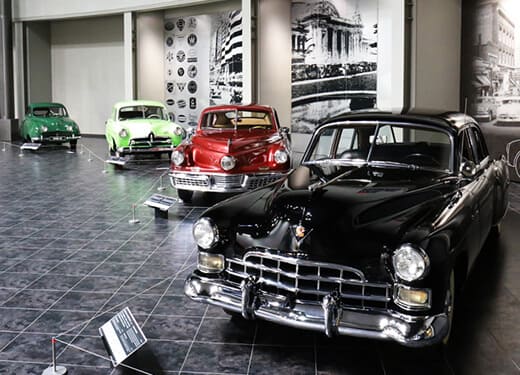Facilities
Automobile Gallery
From the Dawn of the Automobile to the Birth of Japanese Cars
- ZONE 1-8
- From the Dawn of the Automobile to the 1950s
The eight exhibition zones on this floor follow the worldwide progress of automotive technology and culture from the birth of the first practical gasoline-powered automobile (1886 Benz Patent Motorwagen—the one on show is a replica) to the 1950s.

- ZONE 1
- 1890-1910s
The Dawn of the Automobile
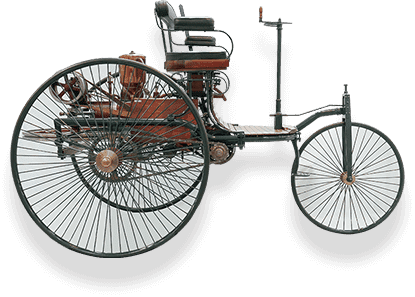
From steam and electricity to gasoline
The first "automobile", a vehicle that runs on machine power rather than human or animal power, was a steam car built in France in the 18c.. This was followed by an electric vehicle in the mid-19c., and the gasoline-powered automobile finally made its appearance in the late 19c.. Although a latecomer, the gasoline-powered automobile underwent steady improvement over the years, and gasoline eventually became the main power source for cars.
The Dawn of the Automobile in Japan
Automobiles powered by steam, electricity, and gasoline arrived in Japan practically together at the turn of the 20c.. Only a few years later, the first Japanese-made automobile was completed by a Japanese who had learned the ropes by observing the imported vehicles. Other attempts at automaking soon followed, but none succeeded in reaching full-scale production, largely due to the lack of industrial resources and infrastructures.
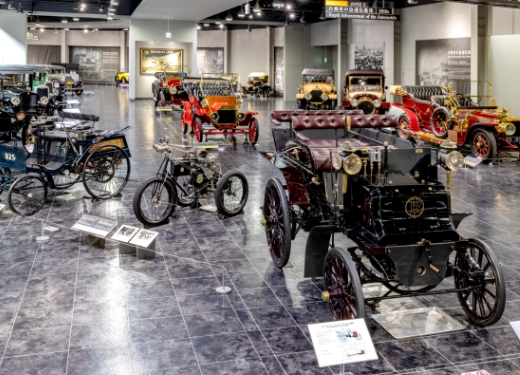
- ZONE 2
- 1910s
Rapid Advancement
of the Automobile
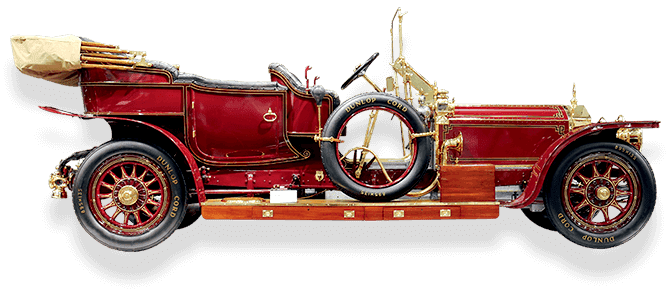
From horseless carriages to automobiles:
the establishment of basic automotive technoligies
The earliest automobiles were noisy, broke down easily. Nevertheless, automotive engineers in Europe and the U.S. kept on exploring one innovative idea after another. As a result, many of the basic automotive technologies still used today were already firmly established by the early 20c.. The performance of automobiles improved dramatically, and the exterior design departed from that of horse-drawn carriages to become increasingly low-slung and stylish. Some early automobiles made by the more scrupulous manufacturers were of very high quality.
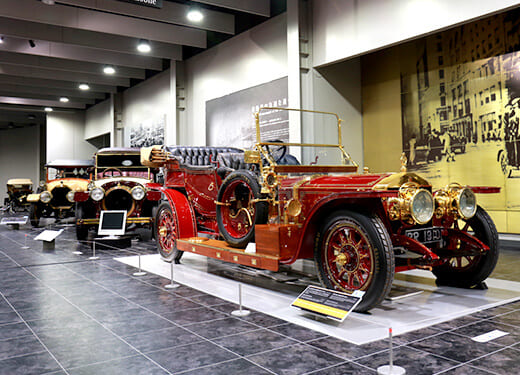
- ZONE 3
- 1910-1930s
Widespread Acceptance
of the Automobile
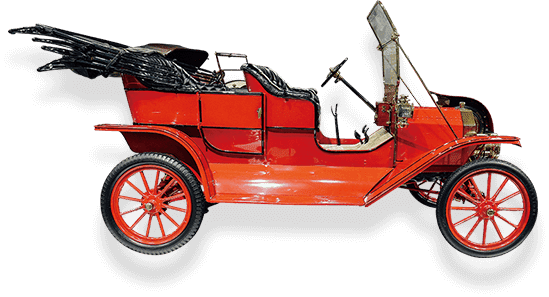
The arrival of the Ford Model T makes the automobile approachable to all
While early automobiles improved in leaps and bounds over a very short period, they were still too expensive for ordinary people to own. Henry Ford decided to change this by building automobiles for the general public, and he launched the Model T in 1908. This car was simple in structure yet sufficiently functional. Most importantly, it was cheap and made life with automobiles a reality both in the U. S. and in other countries around the world.
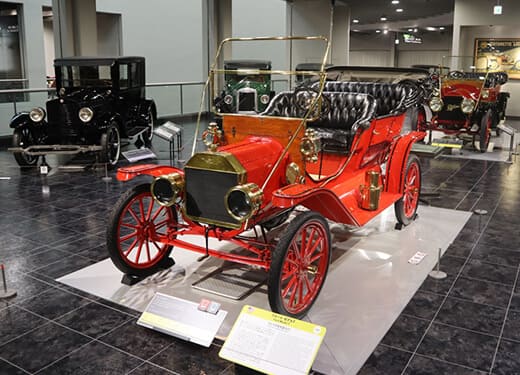
- ZONE 4
- 1920-1930s
A Pageant
of Luxurious Saloons
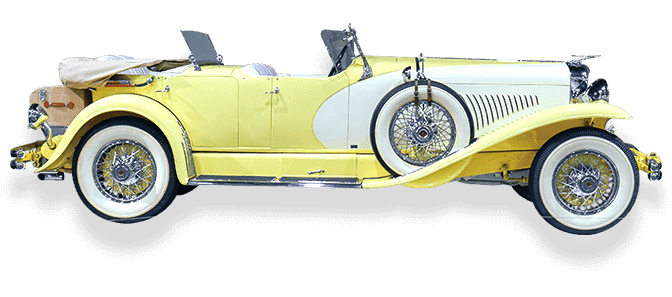
The artistic styling and technological sophistication of fine cars dazzle people
Automotive technology contributed greatly to the early development of airplanes. And then in the 1920s, the advanced engine technologies and lightweight alloys created for airplanes were applied to automobiles, fueling remarkable growth in the auto industry. European and American automakers eagerly produced luxury cars and high-performance cars, many of which were admired for their artistic styling and high technical standards.
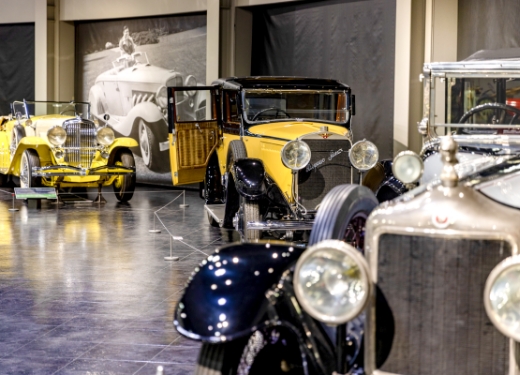
- ZONE 5
- 1920-1940s
The Dawn of Japanese Mass Production
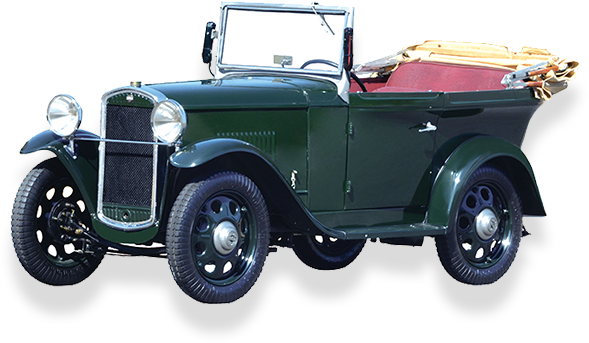
In the 1930s, when American cars dominated the Japanese market, mass production of Japanese-made automobiles starts through the combined efforts of the government and the private sector
The Great Kanto Earthquake of 1923 devastated Tokyo. The public transportation system was crippled, and as a temporary measure to deal with the situation, a number of Ford Model T truck chassis were quickly imported and converted into buses, which proved invaluable to the citizens of Tokyo. This turn of events encouraged the spread of automobiles in Japan, and Ford and Chevrolet established local assembly plants to cash in on the boom. Japanese automakers also started mass production in the mid-1920s, choosing the compact car category, where there was no direct competition with Ford and Chevrolet. Datsun (today’s Nissan) proved reasonably successful. As the Japanese government was also eager to back the emerging auto industry, Nissan, and Toyoda Automatic Loom Works (today’s Toyota) seized this opportunity to embark on full-scale production of automobiles.
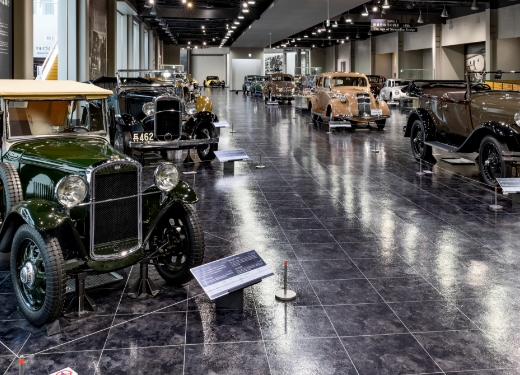
- ZONE 6
- 1930s
The Age of
Streamline Design
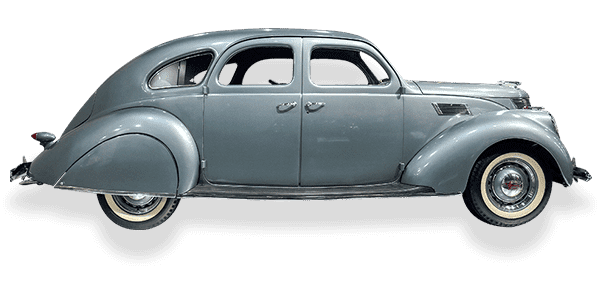
Technology meets fashion to produce a new breed styling
ln the 1930s, the styling underwent a drastic change, due partly to the shift in the mechanical structure, advances in manufacturing, and introduction of aerodynamics. Marketing campaigns also helped to brand "streamline design" as the predominant styling of the time. Although the streamline design initially met some opposition, people soon became fascinated with the speedy image. Toyota quickly adopted the streamline design in its first car, the Toyoda Model AA.
The Spread of Automobiles in Japan and the Start of Domestic Mass Production
The Great Kanto Earthquake of 1923 devastated Tokyo' s public transportation. 800 Ford Model T truck were imported and converted into buses, which proved invaluable to the citizens of Tokyo. They encouraged the spread of automobiles in Japan, and Ford and Chevrolet established local assembly plants. Japanese automakers also started mass production in the mid-1920s, in the compact car category, where there was no direct competition with Ford and Chevrolet. Datsun (today's Nissan) proved reasonably successful. As the Japanese government was also eager to back the emerging auto industry, Nissan, Toyoda Automatic Loom Works (today's Toyota), and Isuzu seized this opportunity to embark on full-scale production of automobiles.
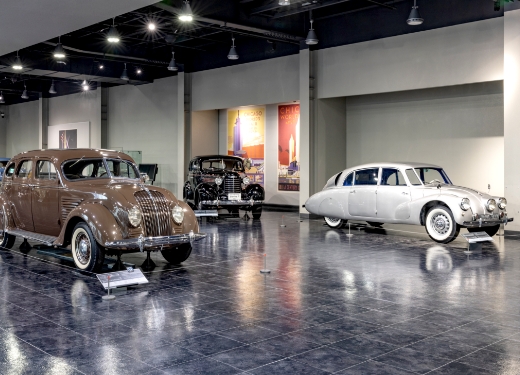
- ZONE 7
- 1930-1940s
The Blossoming Diversity
of Automotive Culture
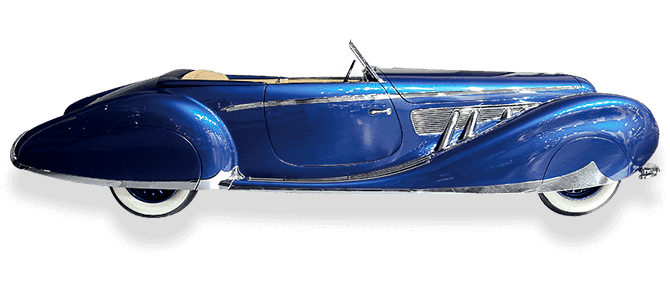
Cars that reflect the unique characters of American and European countries
As the devastating effects of the Great Depression that began in 1929 subsided in the late 1930s, a wide variety of high-performance cars were produced in the U.S. and Europe that reflected the national characteristics of the time. These included French cars imbued with high-flying artistry bordering on decadence, Italian cars with gorgeous bodies built by famous carrozzerie (Italian coachbuilders), British luxury cars built on their rich heritage, German cars with exceptional performance, and uninhibitedly unique American cars.
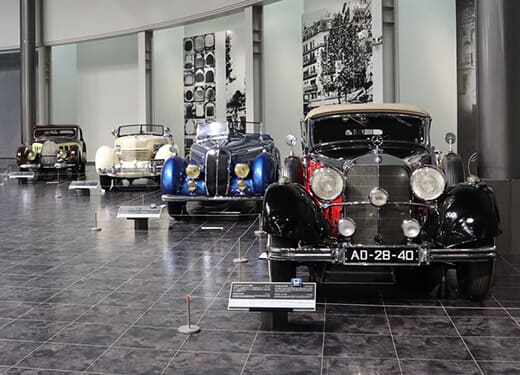
- ZONE 8
- 1930-1950s
Turning a New Leaf
after World WarⅡ
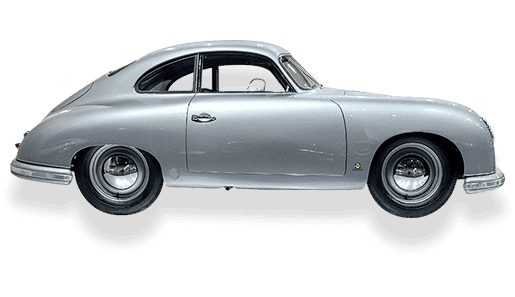
Novel design trends epitomizing the era leave lasting effects
As production of cars resumed in the U.S. soon after the end of WWII, Kaiser and other upstart companies entered into auto manufacturing, using idle arms factories to produce uniquely designed cars. The postwar-models of the Big Three also featured styling innovations that were toprofoundly influence subsequent car designs around the world, including flush sides and tailfins. In Europe, too, a number of newcomers joined the ranks of auto manufacturers.
A Craze for Sports Cars in the U.S.
Some American WWII veterans returning home after serving in Europe brought back lightweight sports cars with them, spurring a craze for sports cars in the U.S. As a result, sports cars made in the U.K. and elsewhere in Europe flooded the U.S. market. American carmakers responded by releasing their own breeds of sports cars and specialty cars, which carved their own niches.
